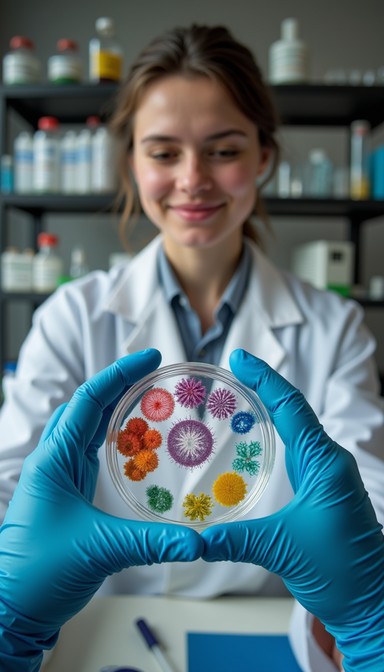1 | Why a Microbiology Lab Still Matters
Culture-based and molecular microbiology remain the cornerstone of pathogen surveillance in food, water, veterinary, and clinical research settings. A purpose-built facility delivers fast, reproducible answers on colony counts, species ID, and antimicrobial susceptibility—data essential for public-health monitoring, industrial hygiene, and basic research.
2 | Facility Layout & Biosafety
- Zoned workflow. Separate sample-receiving/pre-analytical rooms from culture incubation and post-analytical areas to keep live organisms away from amplified DNA or finished reports.
- Biosafety Levels. Most routine work fits BSL-2 infrastructure; high-risk agents move to BSL-3 with directional airflow and HEPA filtration. Both CDC BMBL and the WHO Laboratory Biosafety Manual endorse a risk-based approach, documenting PPE, ventilation, and emergency procedures for every protocol.
3 | Sample Receipt & Chain-of-Custody
Barcoded LIMS tickets time-stamp each hand-off—collection, transport, accession—so deviations in temperature or hold time are traceable within seconds. EPA chain-of-custody SOPs recommend sealing every container, logging cooler temperatures on arrival, and archiving paperwork for at least two years.
4 | Culture Techniques & Isolation Media
- Universal pre-enrichment (tryptic soy broth or buffered peptone water) rescues stressed cells from environmental samples.
- Differential agar (MacConkey, XLD, Cetrimide, Sabouraud) accelerates colony screening by colour and morphology.
- Anaerobic jars or modular chambers sustain obligate anaerobes without full anaerobic hoods—ideal for small labs scaling up. CAP checklists flag media QC (pH, sterility, selectivity) as a high-frequency inspection item.
5 | Rapid Identification & Antimicrobial Susceptibility Testing
| Method | Turnaround | Key Advantages |
|---|---|---|
| MALDI-TOF MS | 5–10 min per isolate | Species-level ID from intact cells; minimal reagents |
| Automated broth microdilution | 4–12 h | Quantitative minimum inhibitory concentration (MIC) panels |
| qPCR or LAMP panels | ≤1 h | Direct detection of high-value targets in complex matrices |
CLSI M100 provides yearly breakpoint updates and QC strain ranges that every susceptibility platform must hit before results go live. Studies show MALDI-TOF cuts ID time by ~24 h versus biochemical panels, boosting same-day reporting.
6 | Quality Management (QA/QC)
| QC Element | Acceptance Criterion | Reference |
|---|---|---|
| Media sterility | No growth after 48 h at 35 °C | CAP-MIC.40800 |
| MALDI-TOF calibration | ≥2 000 a.u. spectrum score | Manufacturer IFU |
| AST control strain | MIC within CLSI M100 range | CLSI M100 |
CAP accreditation checklists require monthly trend reviews of control-strain MIC drift, positive/negative agreement, and contamination events, feeding a corrective-action log that is audited annually.
7 | Data Integrity & LIMS Integration
Instrument middleware funnels raw spectra, MIC tables, and colony counts into a central LIMS. API hooks push anonymized metrics to dashboards that plot turnaround time, contamination rate, and QC variance—allowing supervisors to spot reagent drift days before it reaches reportable results.
8 | Contamination Control & Waste Management
UV-C cabinet cycles, weekly bleach fogging, and single-use filtered tips reduce cross-talk among cultures. Autoclave logbooks must record cycle temperature, pressure, and load description; indicators are verified at least monthly with biological spore tests, per BMBL guidance. cdc.gov
9 | Automation & Scalability
Robotic plate streakers, colony pickers, and automated incubators boost capacity from ~200 to >2 000 plates per shift without extra FTEs. High-load labs often pair MALDI-TOF ID with cloud-based image analytics that pre-screen colony morphology for mixed cultures, slashing manual touchpoints by 60 %.
10 | Training & Compliance
Long-tenured staff anchor institutional memory, yet competency must be documented yearly—covering biosafety, culture techniques, AST interpretation, and LIMS security. CAP, CLSI, and WHO modules offer up-to-date continuing education aligned with regulatory checklists.
A high-throughput microbiology laboratory succeeds when disciplined facility design converges with evidence-backed workflows, transparent QC metrics, and a well-trained team. By coupling risk-based biosafety, validated culture and ID methods, and robust data management, labs can deliver rapid, reliable results that support food safety, environmental monitoring, and biomedical research—without compromising confidence or compliance.
